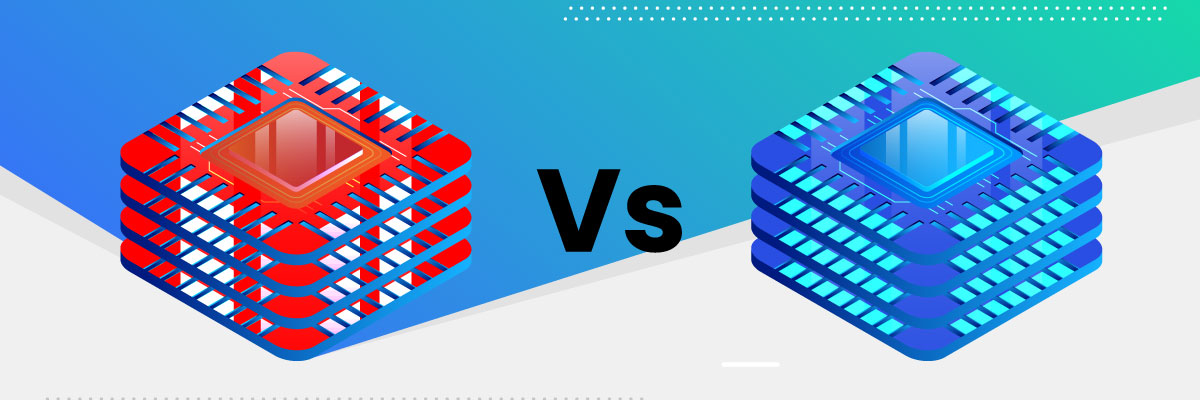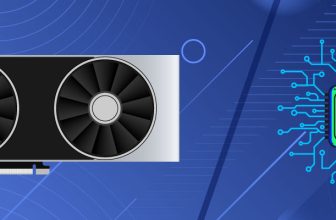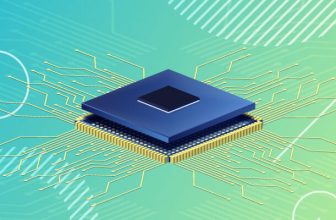AMD Processors vs Intel Processors Comparison

Integrated Electronics (Intel) and Advanced Micro Devices (AMD) are the two most popular brands that manufacture advanced and powerful processors. Both have ruled the world of technology with their broad range of products; however, both have been the center of many debates for years to compare which of the two brands is better. Intel and AMD are still strong competitors.
Performance
Intel processors are known for their power and performance and have dominated the CPU market for a long time. In 1998, Intel introduced the Xeon processors with advanced features like higher core counts, support for greater amounts of RAM and ECC memory, more PCIe lanes and cache memory, provision for enterprise-level reliability, availability, and serviceability (RAS) features. They offer a lot of built-in technologies, critical for businesses. They bring higher speed and processing power to handle creativity-intensive applications, from CAD to 3D rendering and 4K video editing.
AMD EPYC processors were launched in 2017. With these processors, AMD introduced a differentiated and competitive product in terms of both ‘feeds and speed’, and the actual performance of the software. The results to compare the AMD EPYC 7742 having 64 cores and 128 threads and the Intel Xeon Platinum 8180M having 28 cores and 56 threads show that the EPYC two-socket system performed better than the Xeon four-socket system by up to 3.74% for single-core workloads, and 24.83% for multi-core workloads. These processors are ideal for compute-intensive tasks – HPC and AI, and related applications.
However, Performance for both the processors also depends on the workload and kinds of applications being used. EPYC processors may perform well in a certain kind, while Xeon processors may perform well in a different kind.
Longevity
Intel processors have been widely used for non-consumer machines and for many years. They have proved to be stable and reliable throughout. They are known to last for anything between five to ten years or maybe longer before they get completely obsolete. The initial processors released by AMD were not that great, but with the introduction of their Ryzen and EPYC lines of processors, AMD has turned things around. These processors excel in performance, reliability, and stability, and come at lower prices when compared to Intel processors. They also perform better at power consumption and cooling in spite of having overclocking features. Intel has not fared well in forward/backward compatibility, and so AMD processors enjoy more resale value than Intel. AMD seems a winner as far as longevity is concerned.
Power Consumption
When AMD and Intel are compared for power consumption and CPU performance/watt, AMD’s 7 nanometers (nm) node fares as better and more efficient than Intel’s 14 nm. That means the AMD processors have their chips packed more densely – more transistors in less space. And along with an efficient microarchitecture, they deliver enhanced performance. The recently introduced AMD processors consume less power when measured on a performance basis, and so they generate less heat, easing the burden of cooling requirements. A denser process node makes the AMD processors more capable and long-lasting.
Speed
Intel processors come with fixed clocking speeds, which can go up to 4.8 GHz, whereas AMD processors can provide maximum clock speed up to 3.4 GHz, but they allow the users to overclock them. Intel’s focus remains on efficiency and higher clock speeds, while AMD has come up with higher core counts and improved energy efficiency. In general usage, Intel processors run faster and outperform EPYC processors even in database applications. The interconnection of cores on EPYC processors is slower than on Intel Xeon processors. But EPYC processors are speedier when used for memory intensive or gaming applications whereby all the available processor cores are used. Even Intel admitted that.
Multi-Processing Capabilities
Having parallel or multi-processing capabilities are must for processors to handle HPC, AI, machine learning, and deep learning, Which are ruling the realm of computing. Workloads that involve understanding the complex phenomena of the real world, modeling, simulating, etc., cannot be carried out successfully using serial computation. Computing systems these days are designed as multiprocessor systems that can support multiple tasks simultaneously and consolidate several operating systems, workloads, and applications onto one server.
The multiple processors can be separate chips or many cores on the same chip. Advanced processors today have a huge number of transistors on them, which can be used to run multiple threads concurrently or a specific thread faster. This reduces the execution time of a single task significantly and increases the throughput of a machine’s workload with parallel processing. When two or more similar processors share the single main memory of the system, it is termed symmetric multi-processing (SMP). If separate and specialized microprocessors are used for different tasks, it is called asymmetric multi-processing. In symmetric multi-processing capabilities, AMD is ahead of Intel with up to 8 socket/128 cores. Intel processors are capable of up to 4 sockets/28 cores.
Price And Value
Choosing the right processor for your system that provides the features you need and fits your budget is very important. The two major CPU players in the market, AMD and Intel, are constantly compared for their specifications and features and also for the value they offer for the money you spend on either. Intel processors come less expensive than AMD processors at a lower range. However, AMD processors are less expensive than their Intel counterparts at a higher range. Though both brands cater to diverse groups of users and offer many specific advantages, AMD processors have succeeded at being more affordable than Intel CPUs and provide better value to customers.
AMD processors Zen microarchitecture and the Infinity Fabric easily offer more cores at lower costs without compromising performance. Tests have shown that AMD EPYC processors performed around 25% better than the Intel Xeon processors, that too at one-quarter of Intel’s price. Their EPYC line of processors was introduced at half the cost of many Intel processors. With a greater number of cores, memory channels, and PCIe lanes per processor, large L3 cache for faster access to data, along with benefits like less power consumption and optimized performance per watt, AMD EPYC processors have beaten Intel Xeon processors in overall performance and economic value.





